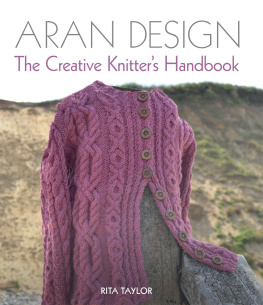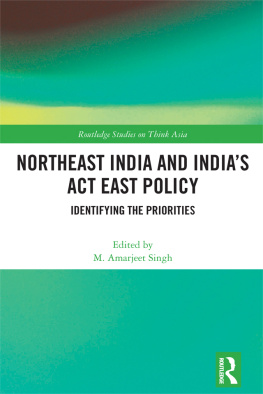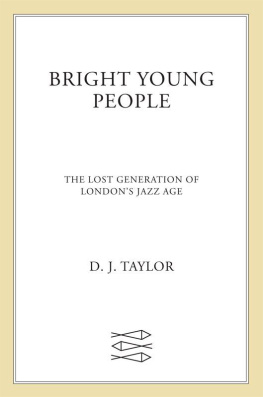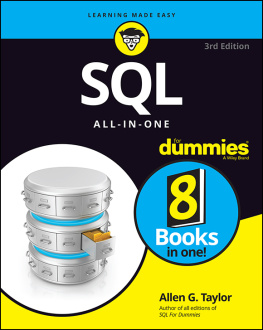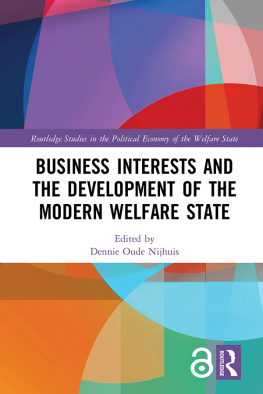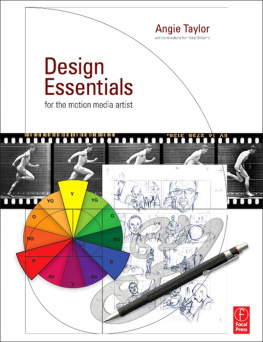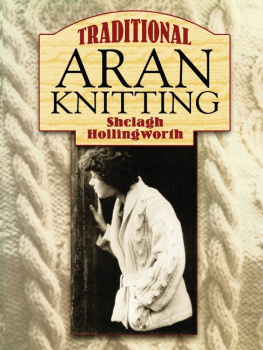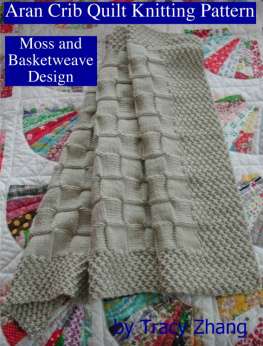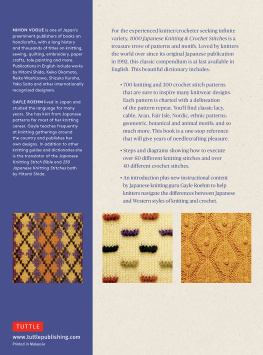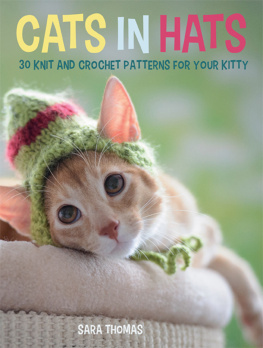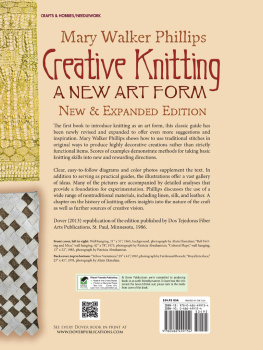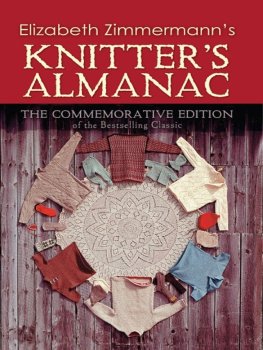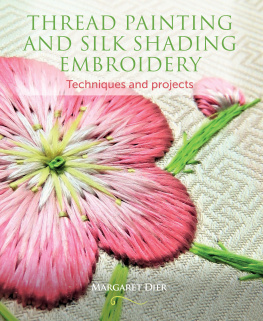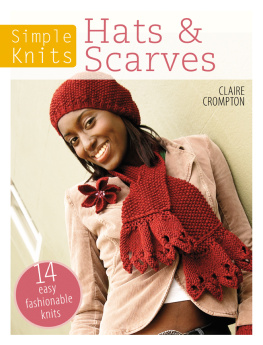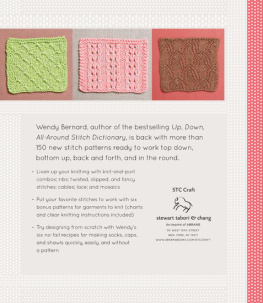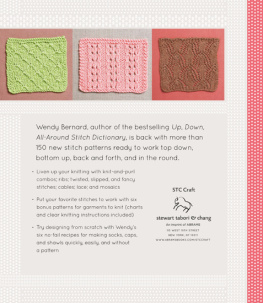ARAN DESIGN
The Creative Knitters Handbook
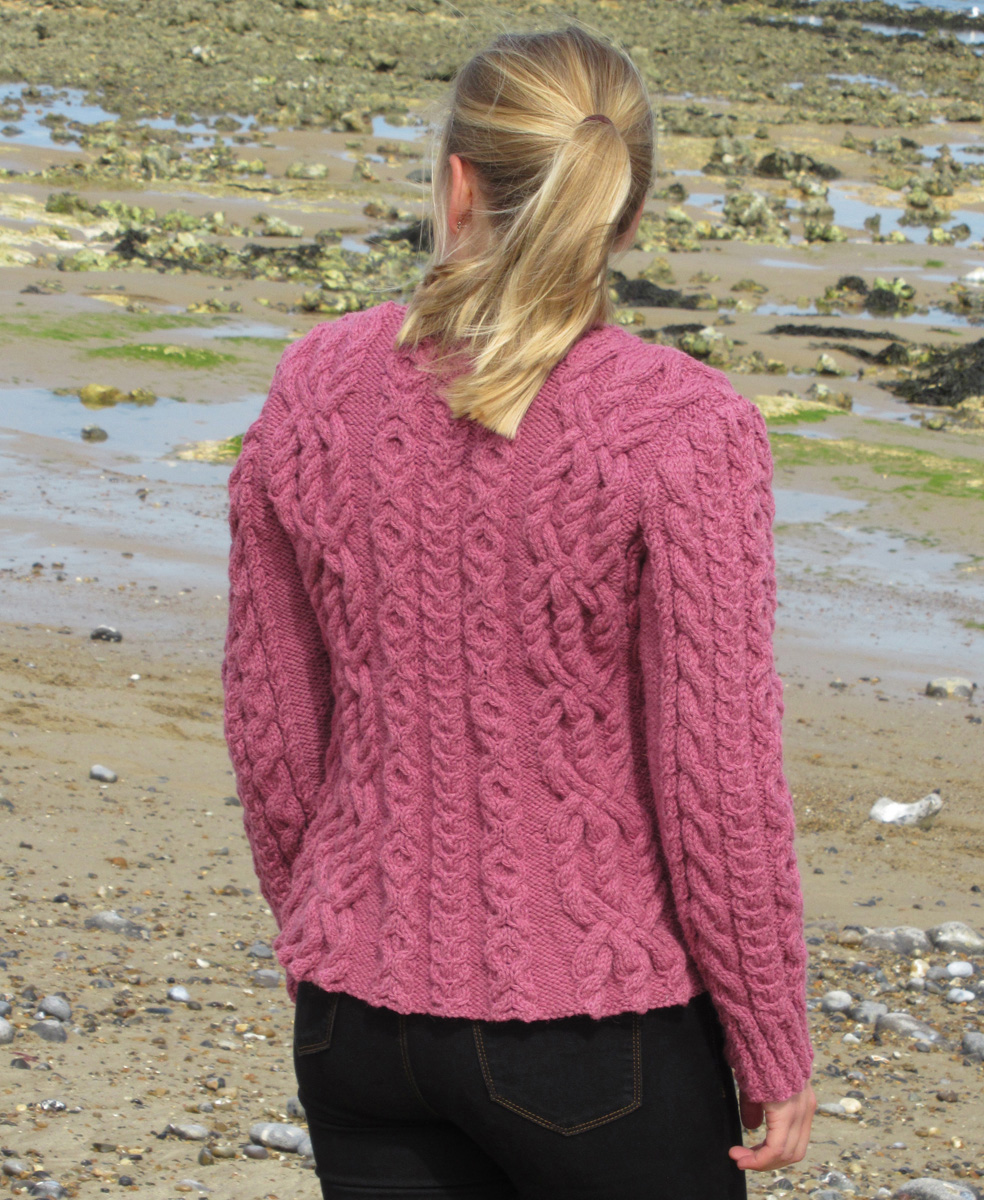
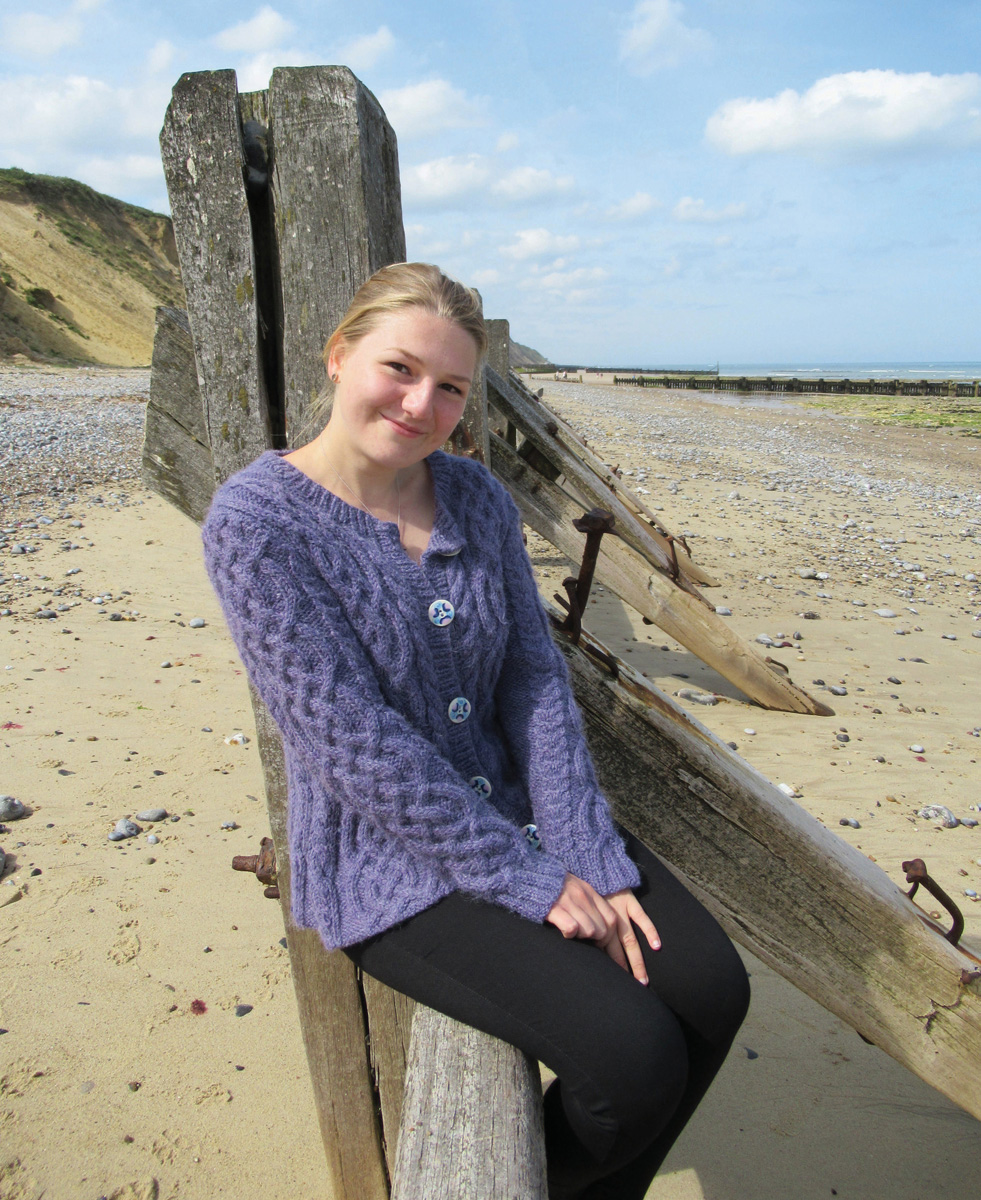
ARAN DESIGN
The Creative Knitters Handbook
RITA TAYLOR

THE CROWOOD PRESS
First published in 2018 by
The Crowood Press Ltd
Ramsbury, Marlborough
Wiltshire SN8 2HR
www.crowood.com
This e-book first published in 2018
Rita Taylor 2018
All rights reserved. This e-book is copyright material and must not be copied, reproduced, transferred, distributed, leased, licensed or publicly performed or used in any way except as specifically permitted in writing by the publishers, as allowed under the terms and conditions under which it was purchased or as strictly permitted by applicable copyright law. Any unauthorised distribution or use of thistext may be a direct infringement of the authors and publishers rights, and those responsible may be liable in law accordingly.
British Library Cataloguing-in-Publication Data
A catalogue record for this book is available from the British Library.
ISBN 978 1 78500 408 7
CONTENTS


ACKNOWLEDGEMENTS
Thank you to Elly Doyle for checking the patterns, to Hilary Grundy for knitting many of the swatches, to photographers Natalie Bullock, Helen James, Marj Law, Rosemary Brown, Ron Wiebe, and to the models, Natalie, Erin and Tess. Thank you to the Knitting & Crochet Guild for permission to use photographs of some of the Aran knitwear in their collection, to the Board of Trinity College Dublin for the picture of the Aran men in their ganseys, and to Batsford Books for the image of the sweater from Gladys Thompsons book. Special thanks to my husband who has been helpful and supportive throughout this work.
Thank you to Mavis Clark for her memories of her grandmothers knitting and, last but not least, thank you to the skilful ladies of the Aran Islands who created such beautiful stitches. Without their originality this book would never have come into being.

INTRODUCTION
There are many opinions on what are the origins of Aran knitting, but the truth is that it is a reasonably young tradition. However, a tradition it is, and people do have an idea of what constitutes a typical Aran sweater. It has a comfortable fit, is usually made from a fairly thick, undyed cream wool and features vertical patterns of crossing stitches, some of which look like ropes, some diamond shapes and some criss-crossed like ribbons. Traditionally there is a wide central panel flanked by bands of cables (the rope-like patterns). Some garments are decorated with bobbles. It is a unisex garment and can be made as a sweater or cardigan in all sizes to fit babies to adults.
Of late some of the central panels have become very intricate, inspired by the Celtic and Viking designs found on stones and crosses. The originators of these motifs appear to be Elsebeth Lavold in her Viking knitting books and Alice Starmore in Fishermens Sweaters. There are also a number of inventive knitters who have created new cables through experimentation. While these are not traditional Aran motifs, they look pleasing and beautiful and are another option for the designing of Arans, so I have included one or two here. These intertwining patterns now appear to be accepted as traditional elements in Aran design. While some may disagree about their authenticity, I see no problem with it. Artists of all kinds like to push the boundaries of their crafts, continuing to experiment in order to keep the craft alive.
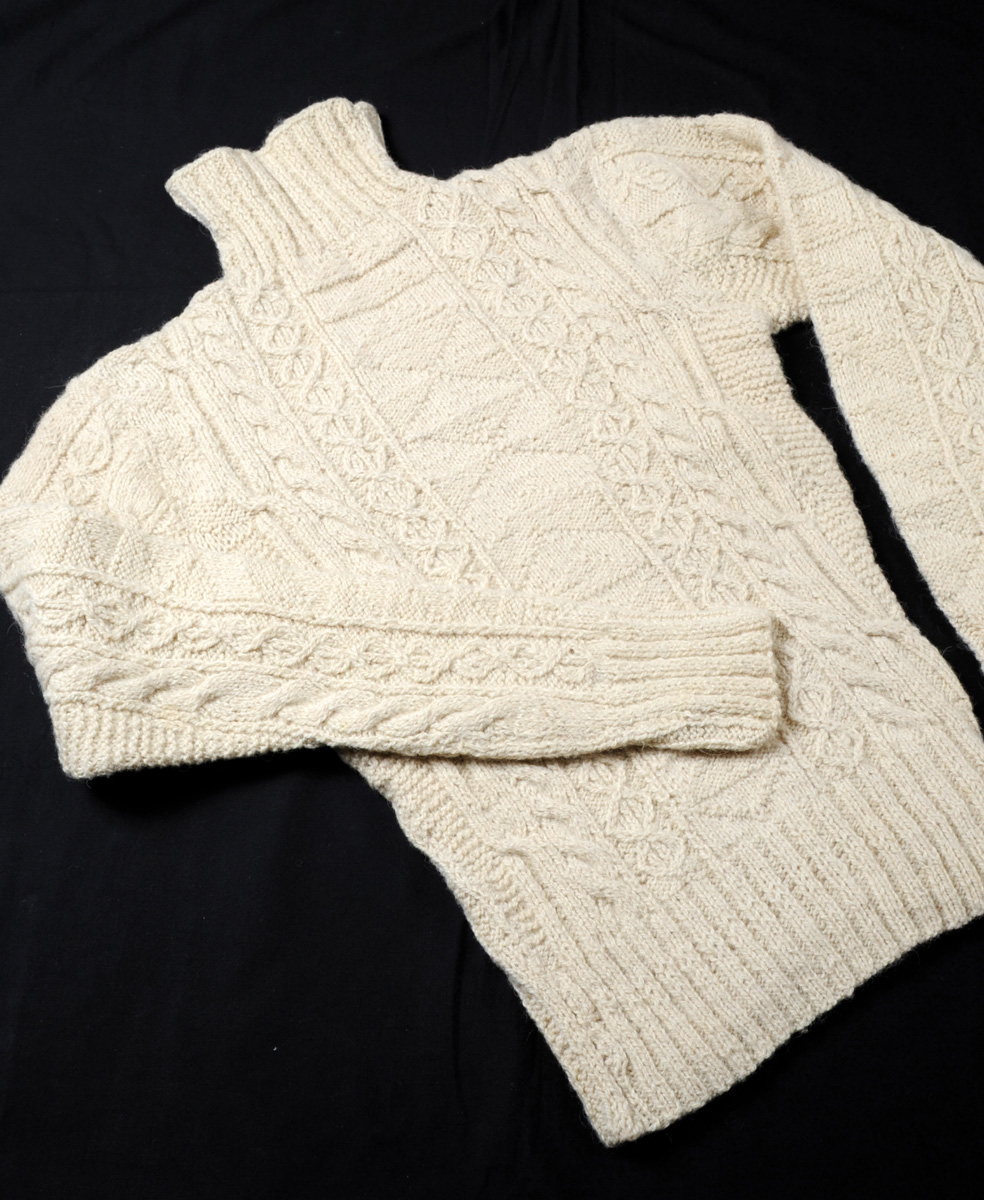
An curragh from the Collection of the Knitting and Crochet Guild.
What this book aims to do is help you to design an Aran sweater yourself; to become comfortable with working a variety of cable stitches and to understand how they work. The more that you experiment, the more you will discover the potential for inventing new cables. This book is not so much an instruction manual, but more a guidebook to help you develop your own ideas. While there are already many existing patterns that you can follow to the letter, my aim is to get you to follow the example of the knitters of the Aran Islands and see how satisfying it is to create something that you have planned and designed for yourself.
While the book does contain a few patterns for you to work as they are, it also gives ideas for ways to change these patterns into a different design, either by changing the shape or inserting different cable motifs. It does not contain basic knitting instructions, but is aimed at the knitter who is already competent in working the commonly used stitches.
The intricacy of all the different crossovers and interlocking of stitches may at first appear too complex to work into a fresh Aran design for all but the most experienced of knitters; I hope that this book will allay some of those fears and will enable you to produce Aran knits that you will be proud of and happy to wear for many years. I hope that it will also give you some ideas of how to use Aran stitches to develop new motifs of your own.

ABBREVIATIONS
Abbreviations in Patterns
alt | alternate |
approx | approximately |
beg | begin(ing) |
c3f | slip 2 stitches onto a cable needle and hold in front, k1, k2 from cable needle |
cm | centimetres |
cont | continue |
dec | decrease |
foll | following |
g | grams |
inc | increase |
incto5 | (k1, p1, k1, p1, k1) into the same stitch to make 5 stitches from 1 |
k | knit |
k2tog | knit 2 together |
kfb | knit into front and back of same stitch |
m1 | make 1 stitch by knitting into the horizontal bar between stitches |
M1L | make 1 stitch in the left leg of the stitch below |
M1R | make 1 stitch in the right leg of the stitch below |
m | metres |
mb | make bobble: k1, yo, k1, yo, k1 all into the next stitch. Turn, purl these 5 stitches, turn and knit them, turn and purl them again, then, with the right side facing, decrease back to one stitch (other ways of making bobbles are given in Chapter 6) |
mm | millimetres |
|
Next page
